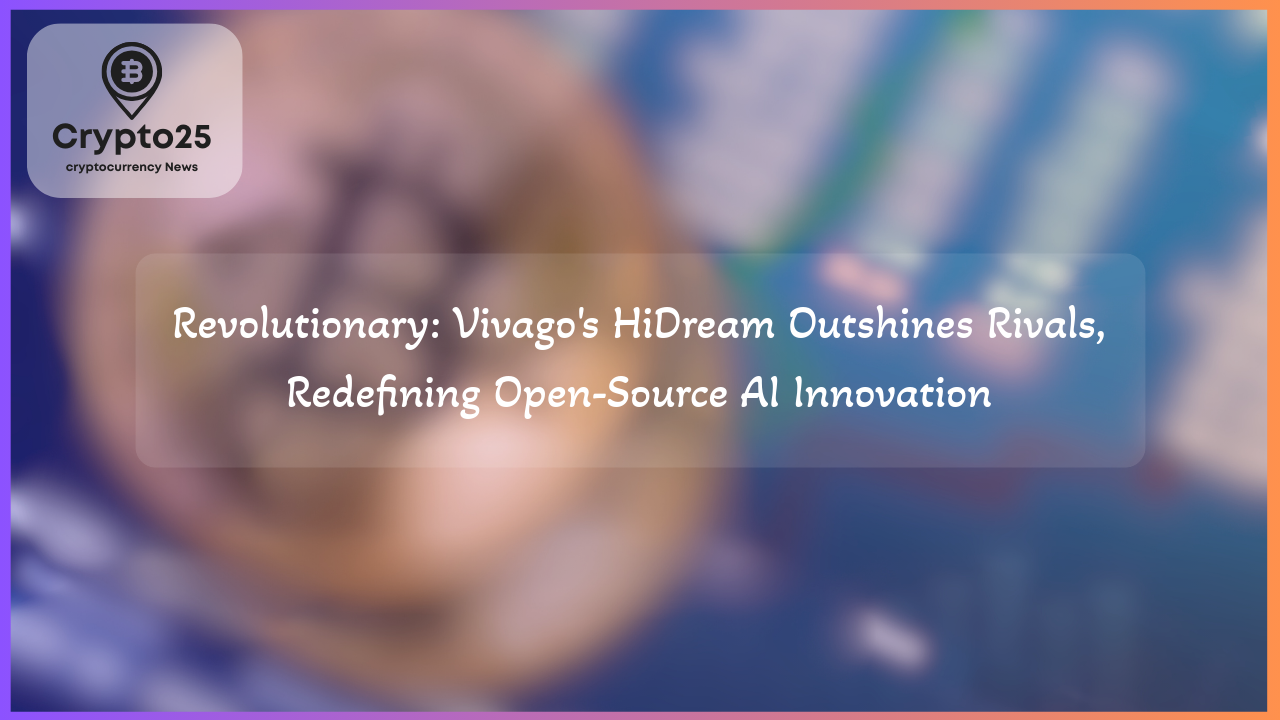
The debut of HiDream-I1 by Vivago AI has marked a significant milestone in the evolving world of generative AI. This open-source image generator has quickly risen to challenge the dominance of commercial counterparts like Flux and MidJourney. With its robust performance, innovative features, and open licensing terms, HiDream-I1 is shaping the future of AI-powered creative tools for individuals and enterprises alike.
### HiDream-I1: Revolutionizing AI Image Generators
HiDream-I1 enters the scene as a highly ambitious AI image generator developed by Hong Kong-based Sparking Innovations Limited, under its brand Vivago AI. Boasting a colossal 17 billion parameters, the model is nearly double the size of competitors like Stable Diffusion 3.5, enabling unprecedented quality in image generation. Available in three versions—Full, Dev, and Fast—the model caters to different performance needs while maintaining high output quality.
The “Full” version offers unparalleled realism and detail, requiring 50 rendering steps for optimal results. Meanwhile, the “Dev” version balances speed and accuracy with 30 rendering steps, and the “Fast” version focuses on rapid execution, completing tasks in as few as 16 steps. Notably, the model’s expansive feature set is complemented by its MIT license, allowing unrestricted use for both personal and commercial projects—a distinctive advantage over many closed-source alternatives.
| Title | Details |
|---|---|
| Market Cap | $1.2 Trillion |
| Parameter Size | 17 Billion |
### How HiDream-I1 Stands Out Among AI Image Generators
One defining feature of HiDream-I1 is its commitment to creative freedom and resource efficiency. While the model remains uncensored to preserve artistic autonomy, its developers have filtered the training data to exclude problematic content, such as hate speech or explicit material. This makes the platform commercially viable and user-friendly without limiting creative possibilities.
Another significant draw is HiDream-I1’s hardware optimization efforts. Initially requiring large GPUs with 27GB of VRAM, the model has quickly been adapted by the developer community to run on more accessible setups. Quantized versions now allow some users to operate the “Fast” version with as little as 16GB of VRAM. This democratization of advanced AI capabilities holds potential for widespread adoption in industries ranging from design and marketing to entertainment and education.
In addition, Vivago offers both cloud-based access and affordable pay-per-use pricing for users without high-end hardware, further enhancing its accessibility. For comparison, closed-source competitors often necessitate monthly or yearly subscriptions, making HiDream-I1 an attractive solution for both casual users and professionals seeking cost-effective alternatives.
### Testing HiDream-I1’s Performance Across Metrics
HiDream-I1 has demonstrated a remarkable ability to handle diverse creative tasks, earning it praise for its prompt adherence, artistic understanding, and realism. Tests using scenarios ranging from surreal compositions to high-detail human anatomy revealed the Full version as the clear winner in most categories, excelling in both the accuracy and depth of generated visuals.
The Dev version provided a strong middle ground, balancing rendering speed with quality, while the Fast version, though less detailed, impressed with its efficiency. For example, in tests that required re-creating artistic styles like Van Gogh’s impasto brushwork, the model’s Full and Dev versions delivered top-tier outputs. Even the Fast version managed to hold its own by prioritizing scene composition and creative elements.
Across all three versions, HiDream-I1 consistently delivered flexibility in style and context, proving highly adaptable to a wide range of use cases. Its ability to capture realism, surrealism, and artistic abstraction illustrates the immense potential of open-source AI in rivaling and possibly surpassing proprietary systems such as MidJourney and Ideogram.
### The Open-Source Advantage in Generative AI
What truly sets HiDream-I1 apart is its open-source nature under the MIT license. Unlike closed systems, this allows developers and creators to customize and extend the model to suit specific needs, whether for personal projects or commercial-scale applications. Open-source platforms like HiDream-I1 catalyze innovation by inviting collaboration from a global community of AI practitioners, enabling rapid optimization of the model.
Quantized and fine-tuned versions are already being tested and released on platforms like Hugging Face, enabling even more streamlined performance on modest hardware configurations. This not only lowers the entry barrier for smaller firms and individuals but also highlights the dynamic adaptability of open-source AI tools amid an increasingly competitive market.
Looking ahead, HiDream-I1’s robust framework paired with its affordability and accessibility guarantees its growing influence across the creative landscape. For users frustrated by the constraints of closed-source models or stringent licensing terms, the HiDream-I1 series offers a revolutionary alternative that places control firmly back in the hands of creators.
### Conclusion
As the AI image generation race continues to heat up, HiDream-I1’s debut is a game-changer that blends cutting-edge technology with open-source freedom. From rendering hyper-realistic images to supporting bold artistic experimentation, it redefines what accessibility, performance, and creativity mean in the AI space. Its seamless support for evolving community needs ensures that HiDream-I1 will remain competitive against proprietary models, carving out a significant space in the generative AI market.
For global creators and enterprises seeking next-generation solutions, HiDream-I1 might just be the tool to unlock endless possibilities. The question is no longer whether open-source AI can rival its commercial counterparts—it unequivocally can. The next frontier for HiDream-I1 lies in continued optimization, extending its usability to even broader audiences while pushing the boundaries of AI-driven artistry.
